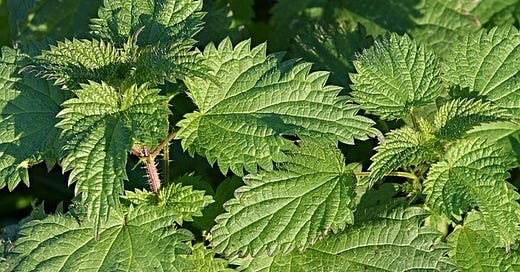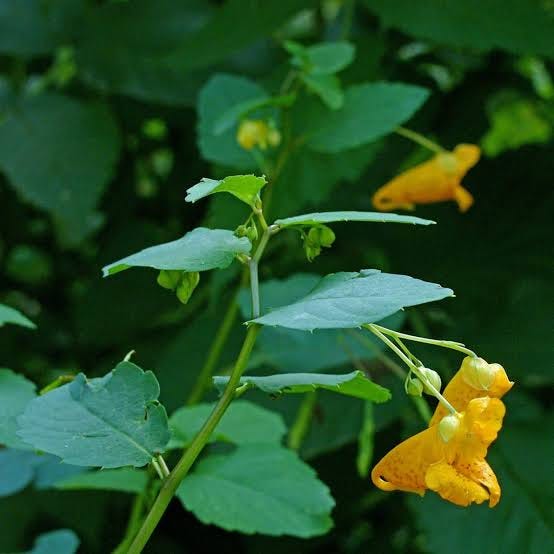Author’s Note: Forgive the lack of narrated voiceover this week, an element of my recording setup broke and I need to replace a part.
Summer begins with a deception. June arrives soft and generous, whispering that there is time—plenty of time—to rest, to begin, to become. The days are long, the light golden, and everything slows. Beneath this stillness runs a tension: the same sun that lulls us into peace also pressures us to do something meaningful with the hours. The solstice approaches and we look to the children and ask “What will you do with all this goodness?” We then look inward and ask the same.
Our answers will reveal a deep struggle, our perpetual wound that is only deepened by modernity; we either overfill the days or waste them. We chase productivity or surrender to distraction. The real challenge of summer is to actually experience leisure. Here, the woods in the hills of Vermont offer a lesson in the form of two plants: wood nettle and jewelweed.
Walk into any forest in June and you’ll find them. The stinging nettle is quiet, almost beautiful, with wide saw-tooth leaves and pale green stems. The teeth-edged leaves remind one of a saw and they may as well be: touch the plant carelessly and you will be punished. Tiny hairs inject a toxic cocktail that will cause swelling, burning, and itching that lingers just as long as a day in late June. It is an unkind encounter, especially on a hot day. Yet almost always, nearby, grows jewelweed with its orange blossoms bouncing in the breeze, its seed pods bursting at a touch. Chew the leaves into a poultice and the juice soothes the sting.
Nature places the wound and the cure side by side.
This is a good pattern that unfurls before you again and again. It shows too in how we treat summer itself. We fill the open space of June with demands and distractions, then wonder why we feel burned. The modern world tempts us to overschedule, leading to a sting of days that should be languid lost in busy hours. Like the jewelweed, however, rest and remedy are nearby if we know how to look.
The modern version of nettle’s sting is digital distraction. It disguises itself as ease, but it agitates and overtaxes. We reach for our phones to “unwind” and find ourselves scrolling endlessly, comparing, consuming, anxious. We fill the summer days with plans and goals and productivity apps meant to “optimize” our leisure until our time off starts to feel like a second job. We pressure ourselves to turn every picnic into a photo opportunity, every hike into a fitness metric, every afternoon into a list of micro-achievements. In this mindset, summer becomes a contest and we leave it more exhausted than when we entered. The sting is real. Luckily the cure is still growing quietly nearby.
Jewelweed, in its seasonal metaphor, is true leisure. It is the unscheduled afternoon, the book read in a hammock, the walk taken without a fitness tracker. It is the conversation with a friend that isn’t interrupted by a notification. It’s sitting by a stream without wondering whether you should be somewhere else. These moments are not a waste of summer, they are its true form manifest. The remedy to the sting of summer’s false urgency is not doing more, but doing better, by deliberately allowing the good long days to be good and long. You must choose slowness, stillness, and sincerity in a culture that tells you to hurry, to measure, to monitor. Like the jewelweed, leisure grows beside the sting but we must choose to reach for it.
The work of summer then is to discern. Not simply to do or not do, but to know what kind of doing creates beautiful moments and what kind leaves you itching and regretful. June will not last. The light will begin to shorten and the autumn calendar will crowd again. If we can see the season clearly—its dual nature, its sting, its cure—we might learn to live it well. We can walk the long days gently, choosing the remedies planted alongside the wounds. We can say no to the itch for more and yes to the kind of rest that restores. We can walk the paths of bough-dappled light and choose to actually be present in these long, good days.
Three Actions to Live a More Grounded Life this June
Keep reading with a 7-day free trial
Subscribe to Echoes from an Old Hollow Tree to keep reading this post and get 7 days of free access to the full post archives.





